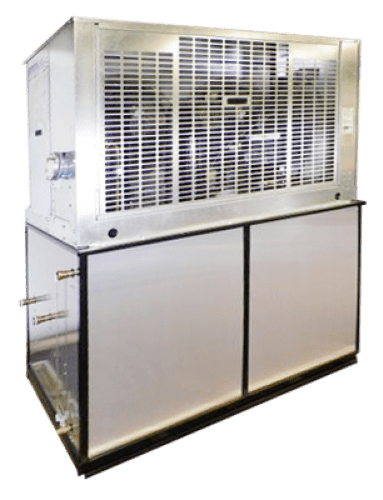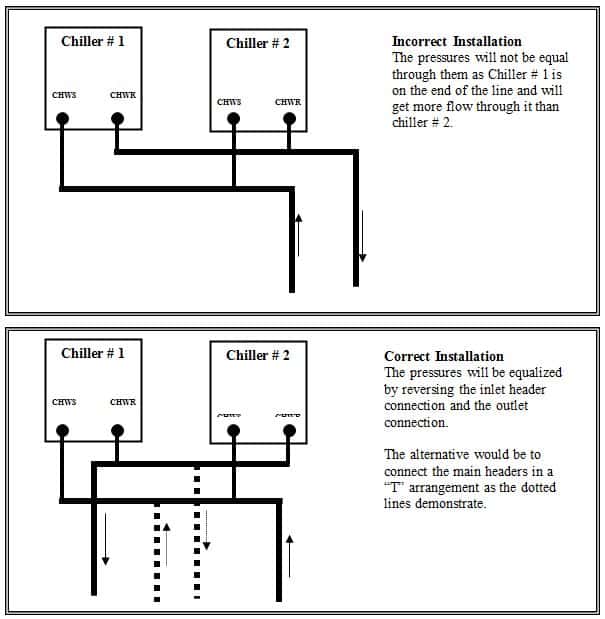Glycol is a type of anti-freeze used in HVAC systems. Breweries require anti-freeze to keep the chiller and pipes from freezing when temperatures in the heat exchanger or around the chiller and/or piping reach temperatures near freezing. Glycol is required even when fluid temperatures are in the 50’s because the refrigerant in the chiller evaporator (heat exchanger) will reach freezing temeratures.
What Type of Glycol Should be Used in a Brewery? Breweries should use a food grade glycol with inhibitors to keep bacteria growth in check. American Chillers recommends USP Certified Inhibited Propylene Glycol. The food grade glycol will help to keep your customers from getting sick if there is a leak or contamination in your brew tank or process.
NEVER USE AUTOMOTIVE OR RV ANTI-FREEZE
Automotive anti-freeze contains lead. Lead is deadly if consumed by humans. It may also be deadly to your chiller as it is formulated for use with aluminum. RV anti-freeze may contain propylene glycol and be deemed food safe BUT it is not formulated for the constant heating and cooling and pumping of a brewery. It will break down and will most likely foul (clog) your chiller heat exchanger. It may also lose its effectiveness as it breaks down and may cause frozen and damaged pipes. The use of either RV or Automotive anti-freeze will also void your chiller warranty.
How Much Glycol Should be Used in a Brewery?
Breweries need to determine their glycol requirements based on twenty degrees Fahrenheit cooler than their glycol temperature (chiller set point) or based on their coldest possible winter ambient conditions, whichever is colder.
For example, if a brewery is located in Miami, Florida and they run their chiller at 28F degrees, they will mix their propylene glycol concentration based on 8F degrees. For a brewery in Ohio, they may base their glycol mixture on -5F degrees if that is their coldest winter ambient temperature.
Is Extra Glycol Better for my Brewery System?
You definitely want to make sure you are covered for the worst possible temperature scenario, but the more glycol you use, the less efficient the heat exchange in your chiller and the less efficient the heat exchange in your brewery jackets and 2-stage wort heat exchanger. Too much glycol may also be bad for your pump or make the solution too thick for your pump. Many breweries are now using low pressure tank jackets to save money. If you are located in an extremely cold environment, you may want to purchase higher pressure brew tanks (30 psi instead of 15 psi rated) or split your chiller, which keeps your fluid indoors and the heat exchanger outdoors.
Questions about what glycol concentration and/or type to purchase? Contact and American Chillers sales engineer for assistance.



